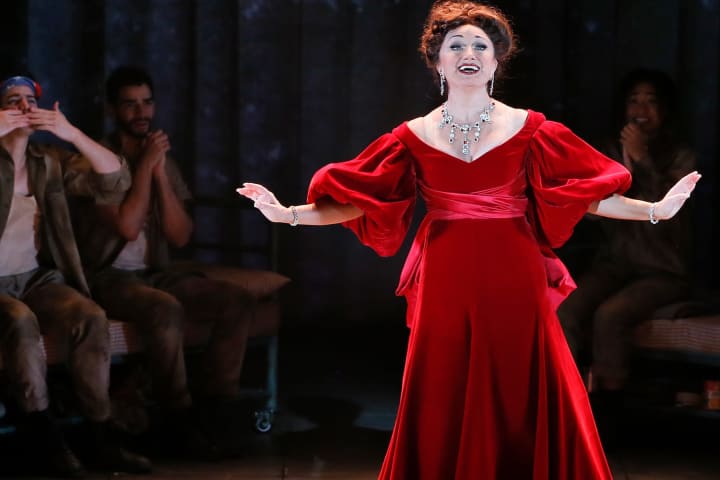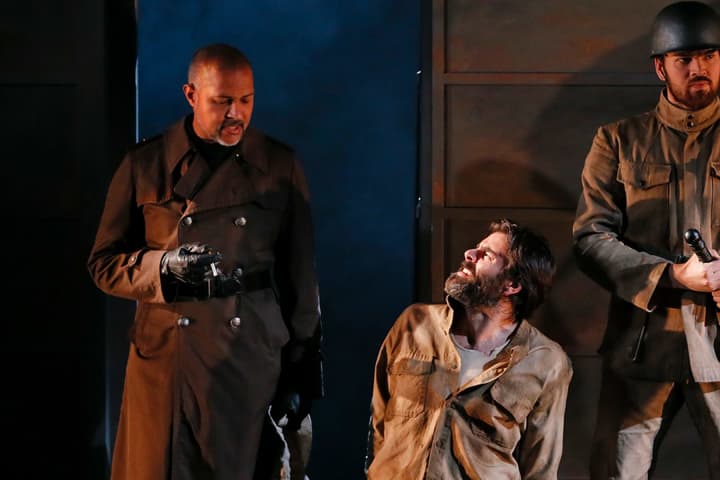‘It was a project designed to ruin everyone’s career.’ This is how film producer David Weisman remembers the 1985 film Kiss of the Spider Woman. ‘A [gay] and a commie in a jail cell, what a marketing nightmare,’ he joked in a documentary about the film, tongue firmly in cheek.
Weisman had been introduced to the film’s source, Manuel Puig’s 1976 novel of the same name, by Puig himself. The two men had become friends and Puig ended up collaborating on parts of the film’s screenplay – which was nominated for an Academy Award. For a novelist who had always wanted to be a screenwriter, it was no doubt a kind of victory for a work that had been both panned and banned before finding its place in history.
Manuel Puig was born in General Villegas, Argentina, in 1932. He was introduced to the movies at a young age by his mother, who shared her passion for all things film with her son. B movies and escapist fare were their favourites. ‘I used to go to the local movie theater with my mother,’ Puig told Américas magazine in 1986. ‘It was our escape. I hated my town. There was an authoritarian, repressive atmosphere, and I saw everything in terms of a second-rate cowboy picture, a B Western. The townspeople were the villains, not the heroes.’
Growing up as a queer man in Argentina’s increasingly conservative and oppressive society, Puig continued to seek refuge in the cinema, which provided him a figurative escape. But by the mid-1960s, when a coup d'état led to a full-blown military dictatorship, he had sought a physical escape overseas.

Manuel Puig (1979). CC BY-SA 2.0
Proto-queer literature
Puig wrote Kiss of the Spider Woman while living in exile in Greenwich Village. Composed almost entirely in dialogue and stream of consciousness, with copious footnotes, it recounts the friendship that develops between two prisoners in a South American jail: Marxist revolutionary Valentin, whose commitment to the cause takes precedence over everything else, including love and joy; and queer, movie-loving Molina, who escapes their harsh reality by recalling, and re-telling, beloved films. The novel clearly reflects the contemporary Argentinean political situation (and was banned in Puig’s home country until democracy was restored in 1983), and its autobiographical parallels are obvious.
‘For me homosexuality doesn’t exist. Heterosexuality doesn’t either … The distinction between masculinity and femininity, the whole notion of role-playing, isn’t natural. When people ask me, “Are you gay?” I say, “I’m a person.”’
While initial reviews were mixed, it has since become a contemporary classic. Recognised as the ‘founding text of a post-Stonewall gay literature in Latin America’[1] it has cemented its place in history. The text notably presents a less binary view of gender and sexuality than was common in the States at the time; indeed, it has been called presciently proto-queer. In Puig’s novel, Molina’s sexual and gender identity is considerably subjective, with academic criticism reading the character as a homosexual man, a heterosexual transgender woman or another, less binary, identity. Valentin initially presents as resolutely hetero, but forms a sexual relationship with Molina throughout the narrative.
In her book, Manuel Puig and the Spider Woman: His Life and Fictions, the author’s close friend and biographer Suzanne Jill Levine writes that Molina and Valentin ‘represent two sides of Manuel’. She quotes the author: ‘For me homosexuality doesn’t exist. Heterosexuality doesn’t either. I don’t think there’s a difference between men and women except for what they have between their legs. The distinction between masculinity and femininity, the whole notion of role-playing, isn’t natural. When people ask me, “Are you gay?” I say, “I’m a person.”’
Kiss of the silver screen
Although written for a Spanish-speaking audience that had less access to information about homosexuality – hence Puig’s extensive use of footnotes that delve into the history, theory and psychology of queerness – Kiss of the Spider Woman found a passionate English-speaking audience in translation, which was cemented with its subsequent adaptation into a 1980s film, then a 1990s musical.
The film was ‘a labour of love, a work of passion,’ David Weisman told IndieWire ahead of its 25th anniversary screening at the Cannes Film Festival in 2010. It had premiered at Cannes in 1985, where it received a 15-minute standing ovation as well as the Best Actor award for William Hurt, who also took home the BAFTA and the Oscar for his performance as Molina – making history as the first actor to win an Academy Award for portraying a gay character on the big screen. Film critic Janet Maslin, reviewing in The New York Times, called it ‘one of the best films in a long while.’ Others credit it with kick-starting the independent film industry that flourished over the following decade.
‘I used to go to the local movie theater with my mother … It was our escape. I hated my town. There was an authoritarian, repressive atmosphere, and I saw everything in terms of a second-rate cowboy picture, a B Western. The townspeople were the villains, not the heroes.’
But it was a difficult journey to that point. It nearly ruined Weisman financially, and right up until its release he was terrified he’d also ruined his and everyone else’s career. It was directed by little-known Brazilian auteur Héctor Babenco, who didn’t speak much English, but who was still able to fight with Hurt throughout production. Hurt wasn’t his first choice for the role: screen icon Burt Lancaster had signed on first. ‘Lancaster was absolutely obsessed with the novel and with playing Luis Molina,’ Babenco told the New York Daily News in 2001. But his obsession reportedly led to artistic differences with the crew – Weisman recalls that the actor’s rewrites ‘resembled something out of a 1950s gay piano bar’ – and the star eventually walked (although ill health may have also played a part). When Hurt eventually signed on, his agent prophetically told him the film would either destroy his career or win him an Oscar.
Kiss on the stage
Puig himself adapted Kiss of the Spider Woman for the stage, transforming his novel into a theatrical play in 1983; it was then translated into English by Allan Baker to premiere in 1985 at London’s Bush Theatre, with Simon Callow and Mark Rylance as Molina and Valentin respectively.
The Broadway musical followed in 1992. Scott Miller, author of Strike Up the Band: A New History of Musical Theatre, wrote ‘John Kander describe[d] the project’s birth: “Freddy came up with the idea. He said to me, “Kiss of the Spider Woman”, and I said “Yes!” immediately. The next person we spoke to was Hal Prince. We said the title and Hal said “Yes!” immediately. Everybody after that thought it was the worst idea they had ever heard.’
‘Freddy came up with the idea. He said to me, “Kiss of the Spider Woman”, and I said “Yes!” immediately. The next person we spoke to was Hal Prince. We said the title and Hal said “Yes!” immediately. Everybody after that thought it was the worst idea they had ever heard.’
The composer, lyricist and director stuck to their guns, however: ‘It was perfectly obvious to the three of us that not only do you have the exotic locale of a South American prison, but you’re spending half the evening inside of somebody else’s fantasy, and if that isn’t a clear message to do something musical, I don’t know what would be.’
In its first iteration, for Prince’s doomed New Musicals venture, it was a failure. But Kander, Ebb and Terrence McNally completely revised the show, cutting most of the original songs and adding new ones in their place, as well as upending the show’s look and structure. In its new shape, and starring Chita Rivera, Brent Carver and Anthony Crivello, Kiss of the Spider Woman played in Toronto and London before arriving on Broadway in 1993 ‘as an established hit’. The awards started rolling in, and history was made, again.
See Kiss of the Spider Woman at The Southbank Theatre, The Sumner, until 28 December.
[1] Daniel Balderston and José Maristany, ‘The Lesbian and Gay Novel in Latin America’ in The Cambridge Companion to the Latin American Novel
Published on 15 November 2019





